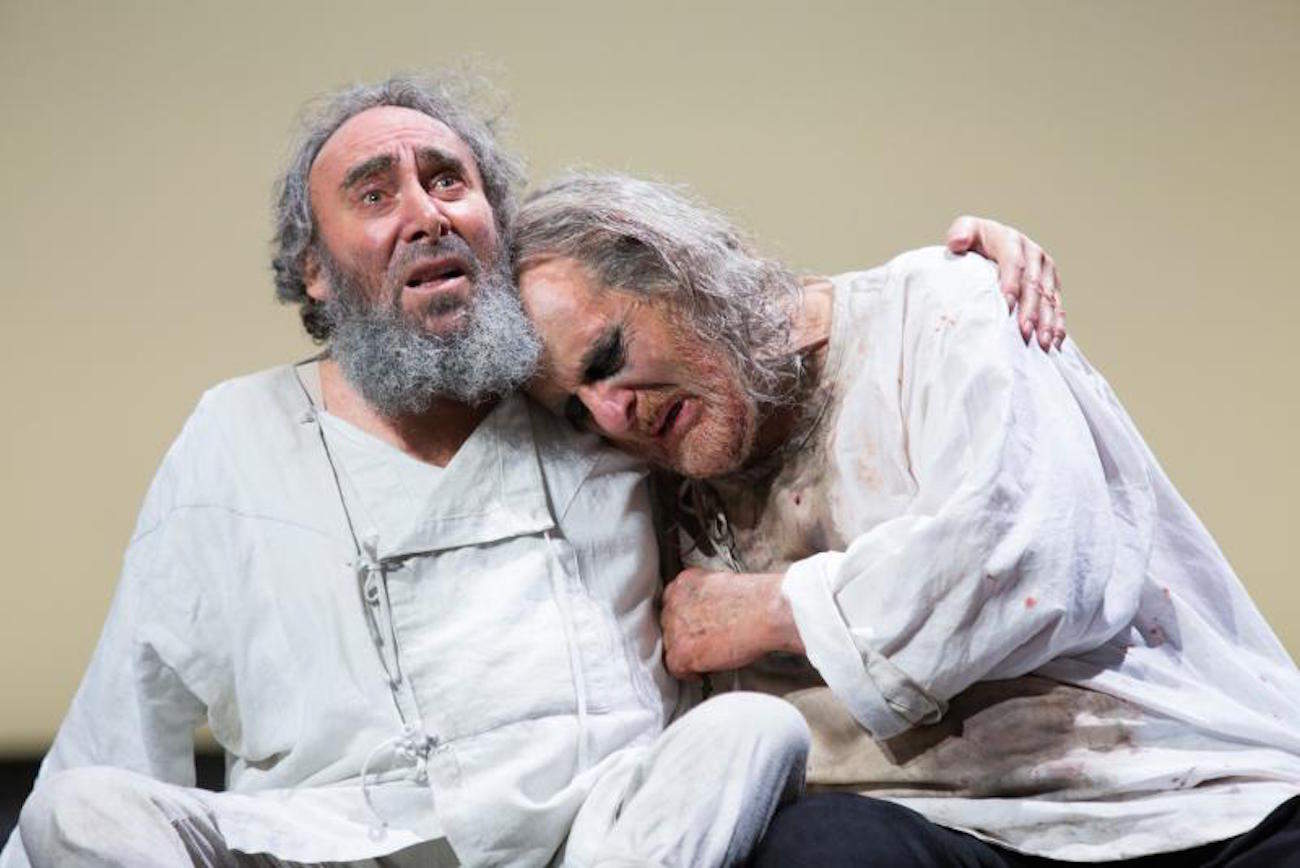
A year ago, during the Royal Shakespeare Company’s London season at the Barbican, I saw Antony Sher as Sir John Falstaff in Gregory Doran’s production of Henry IV Part 2. I’d never much cared for Sher, who is 67, before this performance, finding him a touch too mannered and actorly for my taste. (I was still at school when he did his celebrated turn as Richard III in 1984.)
But I was impressed by Sher as Falstaff. There was nothing self-conscious about his performance. He inhabited the role so naturally that you forgot about the actor – the ghost in the machine – and saw only the man he was meant to be, in all his strange complexity and gluttonous frivolity.
Sher is short but, as Falstaff, he assumed immense proportions as he limped bulkily around the stage, grey-bearded and wild-haired. His wide, smiling eyes only lost their shine at the point of his final rejection by his old friend, the newly crowned Henry V: “I know thee not, old man.”
Sher conveyed the pathos of this humiliation by a subtle change of facial expression, from happy wonder to bewilderment. It was as if he had been awakened to his true self and how desolate that felt.
Now Sher has returned to the Barbican in the great role of Lear, which I studied as an undergraduate so intensely that some of its poetry is scorched into my consciousness. Once again, he is directed by Doran, who is his husband and the RSC’s artistic director. Once again, he is grey-bearded and wide-eyed, and also seemingly limping: a garrulous, stiff-backed old man with three daughters and no wife, who loves foolishly and rules autocratically in a pagan Britain of gods and terrors where the “late eclipses in the sun” portend ill tidings.
As this Lear traduces his tormentors, real and imagined, he sometimes glances anxiously upwards, as if he feels that he is being watched or, worse, judged by forces beyond his control. He likes control and to be adored by those he controls, which is why, as he prepares to divide his kingdom in Act I, he finds so enraging the restrained expression of love of his youngest daughter, Cordelia (Natalie Simpson).
We first encounter Lear as he is carried on to the stage inside a glass box – this later becomes a blood-spattered torture chamber in which the Earl of Gloucester is blinded. Lear wears a thick, heavy fur coat as if dressed for a Siberian winter or for the set of The Revenant, which makes him seem a bigger and much heavier man. When he speaks, his voice deepens and rasps, but it never becomes hoarse.
Later, we see Lear wandering lost in a bleached and desolate landscape, like something out of a Beckett play, wearing only white cotton undergarments. Betrayed by two of his daughters and having survived the storm, he has been driven to the edge of lunacy by pride and lunatic behaviour.
Yet there are times in this long (three hours and 15 minutes, with an interval), gruelling but often inspired production when one could be forgiven for thinking that Sher was reprising the role of Falstaff. I felt this particularly during an extended scene in which Lear and his followers gather around a table, as if in an Eastcheap tavern, to eat and drink and be entertained by the pot-bellied Fool.
The play’s final scene, in which Lear re-enters after an absence, carrying the dead Cordelia, is one of the most poignant in all of Shakespeare. It’s unusual not to hear people around you in the theatre weeping at this moment. We are at the limits of what is humanly tolerable. Stripped of power and reduced to nothing, all dignity gone, Lear has come to understand just how much he wronged Cordelia, whom he cruelly banished, and just how much he loves her.
But it is too late. We in the audience know that she is dead, having been hanged out of sight offstage. Lear refuses to accept what has happened. He asks for a feather to hold against his daughter’s lips, because if it stirs, she lives: “If it be so,/It is a chance which does redeem all sorrows/That ever I have felt.”
Lear is one of the great parts for an actor in late-middle or old age. Sher captures the king’s transition from demagoguery to tragic collapse as well as he did Falstaff’s belated awakening to the truth of who he really is. Yet I was less moved than I should have been.
In this King Lear, horror and humour are held in close proximity. The production hovers uneasily between tragedy and farce, with farce often to the fore. Paapa Essiedu – who is very good – plays Edmund, Gloucester’s evil illegitimate son, with camp energy and mostly for laughs. Some of the Fool’s clowning was so protracted that one yearned for the interval. And when a howling Lear entered with the dead Cordelia in his arms, one saw the actor, not just the man he was meant to be.
The Barbican’s “King Lear” runs until 23 December. barbican.org.uk






